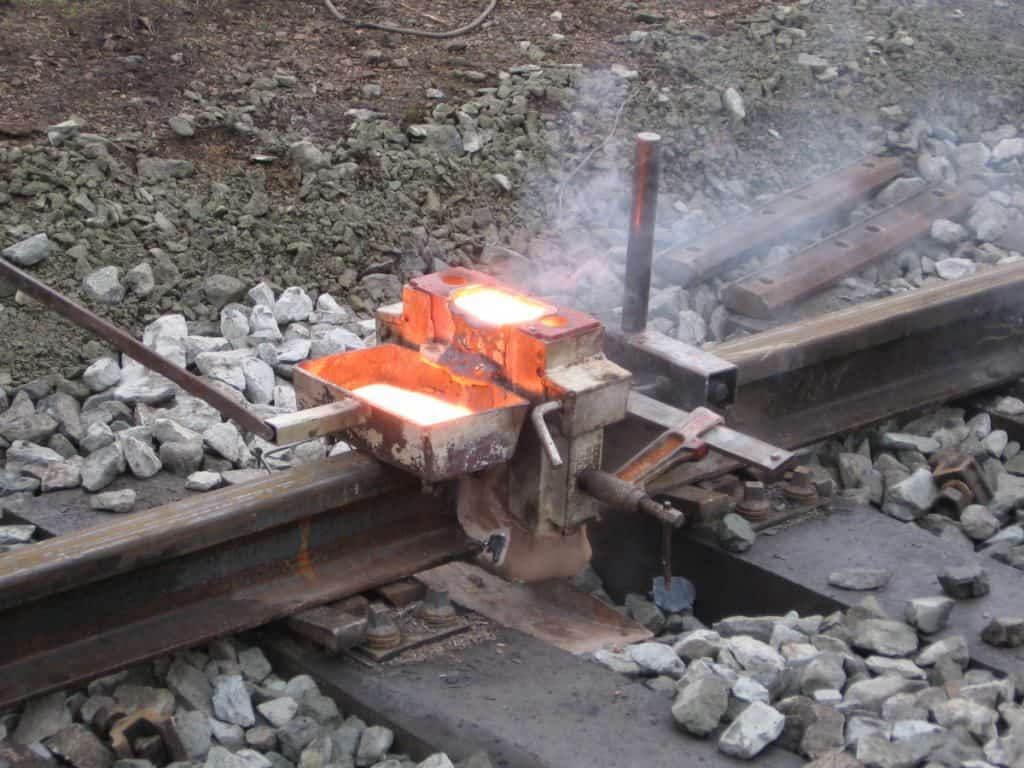Thermite welding is a process that uses the combination of iron oxide and aluminum powder to create intense, localized heat. The how does thermite welding work process was patented by Edward G. Acheson in 1919. This article will discuss how thermite welders work and how they are used in industry today!
What is thermite welding?
Thermite welding is the process of joining metals together using a thermite reaction. The thermite heats the metal parts to a very high temperature, and then they’re pressed together to create a molten pool that then hardens.
Thermite welding is a type of friction-based joining that can be done without using any flux. The process also does not require the surfaces to have been previously cleaned or prepared in any way, meaning it’s a straightforward and quick technique that won’t take up too much time compared with other metal joining techniques like brazing.
What equipment is needed for thermite welding?
Thermite welding equipment includes a thermite charge, which is composed of iron oxide and aluminum powder. The aluminum is encased in a protective paper or metal shell to prevent oxidation. The pieces of metal that the welders are going to be joining together are usually heated before the process begins. More specifically, thermite welding work involves heating both surfaces to be hot enough for the reaction to happen.
What is an example of how thermite welding might be used?
Thermite welding is often used in industry today when there’s a need for large volumes of solid and reliable welds. It’s also commonly used as an alternative to other types of welding methods, such as arc welding, gas tungsten arc welding (GTAW), and gas metal arc welding (MIG).
Thermite welders can also be used on thin materials, allowing thermite welding to provide a more controllable process. This is especially useful when joining parts of a different size together or needing very close tolerances for the finished product.
How thermite welding works
The thermite reaction is the oxidation of metal powders using a localized, exothermic reaction that produces enough heat to melt the metals at the interface and form a weld.
The first step in the thermite reaction is to mix two substances, metal oxide, and iron(III) oxide. The mixture of these two powders will produce heat without any spark or flame needed.
Thermite welding works by mixing the aluminum powder with another type of metallic fuel, such as magnesium strip or zinc dust. A small amount of water is added to the mixture, and it is then ignited with a small flame. The aluminum will react violently when heated, producing enough heat to melt any metals in its proximity.
The reaction continues until all of the metal-fuel has been consumed, or all-aluminum powder has burned off.
There are two types of thermite reactions that can be used to weld metals. The first is gasless welding, which uses magnesium as the fuel and aluminum or zinc powder for the metal oxide. This type of reaction does not require air or oxygen to sustain itself.
The second type of thermite welding is a more traditional form called ignited welding, where a small amount of air or oxygen is mixed with the metal-fuel and aluminum oxide.
Why should you use thermite welding?
Thermite welders are a simple and quick technique that will not take up too much time. Compared to other metal welding techniques, thermite is a simpler process that does not require the surfaces to be prepped in any way.
Thermite welding is also a type of friction-based joining without any flux, making it very easy to do. Thermite welding also does not require any air or oxygen because the aluminum powder will combust with a small flame, which is an environment-friendly technique.
Thermite welding is an excellent choice for metal joining for many different reasons!
Who shouldn’t bother with thermite welding?
Thermite welding should not be attempted by anyone who does not feel confident in working with it. You should also not try thermite welding if you are using any type of unrefined metal, such as aluminum dross or recycled metal. Thermite welding is also unsafe for use on hollow tube sections or on materials that cannot be completely coated with molten metal during the process.
Is thermite welding safe?
The answer to the question is thermite welding safe would depend on how it is being used.
Thermite welding is generally considered a safe process when it is done with proper care. It should not be attempted by anyone who does not have training and experience in using such a process. You should also not try thermite welding if you are using any type of unrefined metal, such as aluminum dross or recycled metal. Thermite welding is also unsafe for use on hollow tube sections or on materials that cannot be completely coated with molten metal during the process.
Summary
This article has discussed how thermite welding works in detail, how the process came about, and how to do a how does thermite welding works. Thermite welders are also very easy to use and can weld metals easily.

